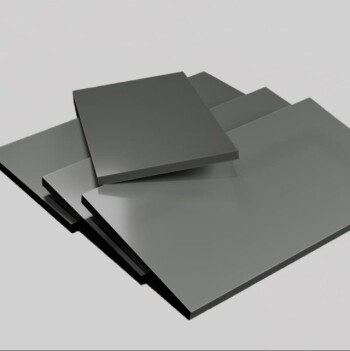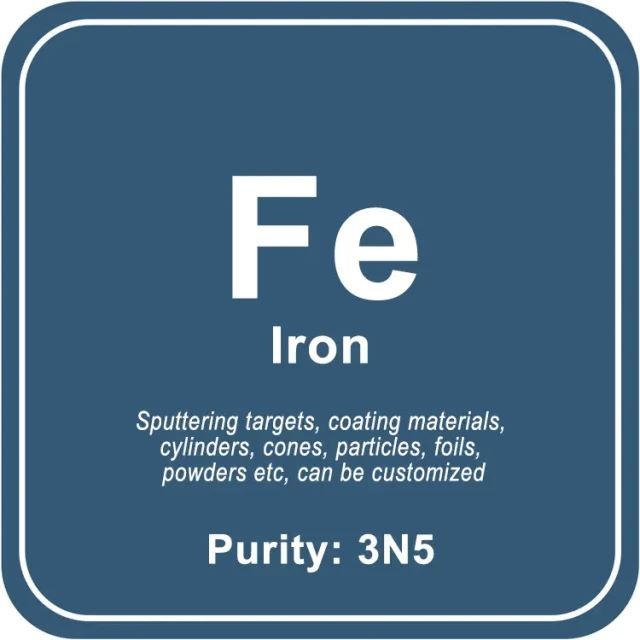
Lab Materials
High Purity Iron (Fe) Sputtering Target / Powder / Wire / Block / Granule
Item Number : LM-FE
Price varies based on specs and customizations
- Chemical Formula
- Fe
- Purity
- 3N5
- Shape
- discs / wire / block / powder / plates / column targets / step target / custom-made

Shipping:
Contact us to get shipping details Enjoy On-time Dispatch Guarantee.
We provide affordable Iron (Fe) materials for laboratory use and specialize in tailoring them to meet your specific needs, including different purities, shapes, and sizes. Our range of products includes sputtering targets (circular, square, tubular, irregular), coating materials, cylinders, cones, particles, foils, powders, 3D printing powders, nanometer powders, wire rods, ingots, and blocks in various specifications and sizes.
Details






About Iron (Fe)
Iron and its compounds have a wide range of applications in various fields due to their unique properties. Iron is the most commonly used metal for commercial purposes because of its hardness, historical availability, and low cost. It is frequently alloyed with carbon, nickel, and other elements to produce steel and other high-strength structural metals.
Iron is a primary colorant in glass and ceramics, and it is used as a catalyst. Due to its magnetic properties, iron is the basis for low-grade magnets and is used in memory tape and magnetic resonance imaging (MRI). Iron is available in various forms, including metal and compounds with purities ranging from 99% to 99.999% (ACS grade to ultra-high purity).
Elemental or metallic forms of iron, such as pellets, rod, wire, and granules, are utilized as evaporation source material for various purposes. Iron nanoparticles and nanopowders are also available. Oxides are available in powder and dense pellet form for optical coating and thin film applications, although they tend to be insoluble.
Iron fluorides are another insoluble form used in metallurgy, chemical and physical vapor deposition, and some optical coatings. Iron is also available in soluble forms, including chlorides, nitrates, and acetates, which can be manufactured as solutions at specified stoichiometries.
In summary, iron and its compounds offer an extensive range of applications for industries, and their availability in various forms and purities makes them highly versatile for many purposes.
Ingredient Quality Control
- Raw material composition analysis
- Through the use of equipment such as ICP and GDMS, the content of metal impurities is detected and analyzed to ensure that it meets the purity standard;
Non-metallic impurities are detected by equipment such as carbon and sulfur analyzers, nitrogen and oxygen analyzers. - Metallographic flaw detection analysis
- The target material is inspected using flaw detection equipment to ensure that there are no defects or shrinkage holes inside the product;
Through metallographic testing, the internal grain structure of the target material is analyzed to ensure that the grains are fine and dense. - Appearance and dimension inspection
- Product dimensions are measured using micrometers and precision calipers to ensure compliance with drawings;
The surface finish and cleanliness of the product are measured using a surface cleanliness meter.
Conventional Sputtering Target Sizes
- Preparation process
- hot isostatic pressing, vacuum melting, etc.
- Sputtering target shape
- plane sputtering target, multi-arc sputtering target, step sputtering target, special-shaped sputtering target
- Round sputtering target size
- Diameter: 25.4mm / 50mm / 50.8mm / 60mm / 76.2mm / 80mm / 100mm / 101.6mm / 152.4mm
Thickness: 3mm / 4mm / 5mm / 6mm / 6.35mm
Size can be customized. - Square sputtering target size
- 50×50×3mm / 100×100×4mm / 300×300×5mm, size can be customized
Available Metal Forms
Metal Forms Details
We manufacture almost all the metals listed on the periodic table in a wide range of forms and purities, as well as standard sizes and dimensions. We can also produce custom-made products to meet specific customer requirements, such as size, shape, surface area, composition, and more. The following list provides a sample of the forms we offer, but it is not exhaustive. If you need laboratory consumables, please contact us directly to request a quote.
- Flat/Planar Forms: Board, Film, Foil, Microfoil, Microleaf, Paper, Plate, Ribbon, Sheet, Strip, Tape, Wafer
- Preformed Shapes: Anodes, Balls, Bands, Bars, Boats, Bolts, Briquettes, Cathodes, Circles, Coils, Crucibles, Crystals, Cubes, Cups, Cylinders, Discs, Electrodes, Fibers, Filaments, Flanges, Grids, Lenses, Mandrels, Nuts, Parts, Prisms, Pucks, Rings, Rods, Shapes, Shields, Sleeves, Springs, Squares, Sputtering Targets, Sticks, Tubes, Washers, Windows, Wires
- Microsizes: Beads, Bits, Capsules, Chips, Coins, Dust, Flakes, Grains, Granules, Micropowder, Needles, Particles, Pebbles, Pellets, Pins, Pills, Powder, Shavings, Shot, Slugs, Spheres, Tablets
- Macrosizes: Billets, Chunks, Cuttings, Fragments, Ingots, Lumps, Nuggets, Pieces, Punchings, Rocks, Scraps, Segments, Turnings
- Porous and Semi-Porous: Fabric, Foam, Gauze, Honeycomb, Mesh, Sponge, Wool
- Nanoscale: Nanoparticles, Nanopowders, Nanofoils, Nanotubes, Nanorods, Nanoprisms
- Others: Concentrate, Ink, Paste, Precipitate, Residue, Samples, Specimens
KinTek specializes in the manufacturing of high-purity and ultra-high-purity materials with a purity range of 99.999% (5N), 99.9999% (6N), 99.99995% (6N5), and in some cases, up to 99.99999% (7N). Our materials are available in specific grades, including UP/UHP, semiconductor, electronic, deposition, fiber optic, and MBE grades. Our high-purity metals, oxides, and compounds are specifically crafted to meet the rigorous demands of high-technology applications and are ideal for use as dopants and precursor materials for thin film deposition, crystal growth of semiconductors, and synthesis of nanomaterials. These materials find use in advanced microelectronics, solar cells, fuel cells, optical materials, and other cutting-edge applications.
Packaging
We use vacuum packaging for our high-purity materials, and each material has specific packaging tailored to its unique characteristics. For instance, our Hf sputter target is externally tagged and labeled to facilitate efficient identification and quality control. We take great care to prevent any damage that could occur during storage or transportation.
4.9
out of
5
KINTEK's Iron (Fe) Sputtering Target excels in quality and delivers high-performance results. Highly recommended!
4.8
out of
5
Exceptional product! The Iron (Fe) Sputtering Target has enhanced our laboratory's efficiency and precision. Thank you, KINTEK!
4.7
out of
5
Impeccable quality and prompt delivery. KINTEK's Iron (Fe) Sputtering Target has revolutionized our research capabilities.
4.9
out of
5
KINTEK's Iron (Fe) Sputtering Target is a game-changer. Its durability and reliability have taken our research to new heights.
4.8
out of
5
Exceptional product! The Iron (Fe) Sputtering Target has enhanced our laboratory's efficiency and precision. Thank you, KINTEK!
4.7
out of
5
Impeccable quality and prompt delivery. KINTEK's Iron (Fe) Sputtering Target has revolutionized our research capabilities.
4.9
out of
5
KINTEK's Iron (Fe) Sputtering Target is a game-changer. Its durability and reliability have taken our research to new heights.
4.8
out of
5
Exceptional product! The Iron (Fe) Sputtering Target has enhanced our laboratory's efficiency and precision. Thank you, KINTEK!
4.7
out of
5
Impeccable quality and prompt delivery. KINTEK's Iron (Fe) Sputtering Target has revolutionized our research capabilities.
4.9
out of
5
KINTEK's Iron (Fe) Sputtering Target is a game-changer. Its durability and reliability have taken our research to new heights.
4.8
out of
5
Exceptional product! The Iron (Fe) Sputtering Target has enhanced our laboratory's efficiency and precision. Thank you, KINTEK!
4.7
out of
5
Impeccable quality and prompt delivery. KINTEK's Iron (Fe) Sputtering Target has revolutionized our research capabilities.
REQUEST A QUOTE
Our professional team will reply to you within one business day. Please feel free to contact us!
Related Products
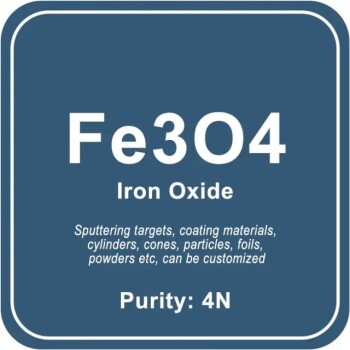
High Purity Iron Oxide (Fe3O4) Sputtering Target / Powder / Wire / Block / Granule
Get Iron Oxide (Fe3O4) materials of different purities, shapes & sizes for laboratory use. Our range includes sputtering targets, coating materials, powders, wire rods, & more. Contact us now.
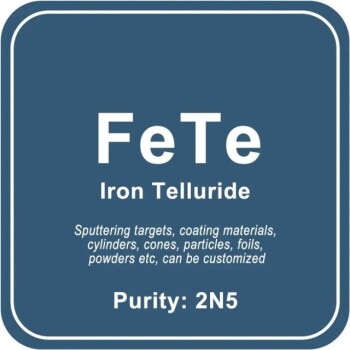
Iron Telluride (FeTe) Sputtering Target / Powder / Wire / Block / Granule
Get high-quality Iron Telluride materials for your lab needs at affordable prices. Our tailored options cater to your specific requirements with a range of shapes and sizes available.

Iron Nickel Alloy (FeNi) Sputtering Target / Powder / Wire / Block / Granule
Discover affordable Iron Nickel Alloy materials tailored to your lab's needs. Our FeNi products come in various sizes and shapes, from sputtering targets to powders and ingots. Order now!
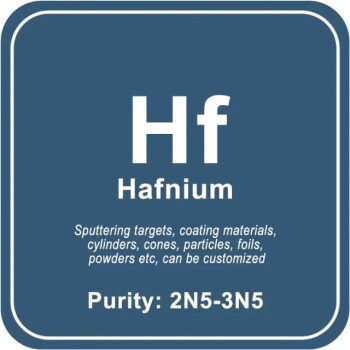
High Purity Hafnium (Hf) Sputtering Target / Powder / Wire / Block / Granule
Get high-quality Hafnium (Hf) materials tailored to your lab needs at reasonable prices. Find various shapes and sizes for sputtering targets, coating materials, powders, and more. Order now.
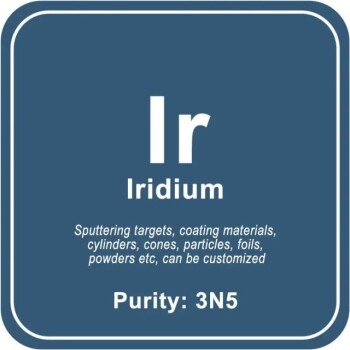
High Purity Iridium (Ir) Sputtering Target / Powder / Wire / Block / Granule
Looking for high-quality Iridium (Ir) materials for laboratory use? Look no further! Our expertly produced and tailored materials come in various purities, shapes, and sizes to suit your unique needs. Check out our range of sputtering targets, coatings, powders, and more. Get a quote today!
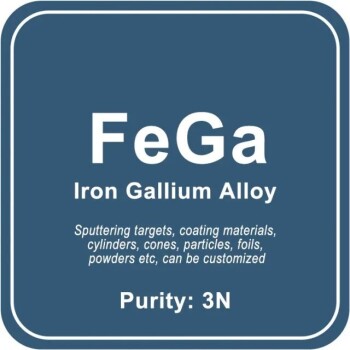
Iron Gallium Alloy (FeGa) Sputtering Target / Powder / Wire / Block / Granule
Find high-quality Iron Gallium Alloy (FeGa) materials for laboratory use at reasonable prices. We customize materials to suit your unique needs. Check our range of specifications and sizes!
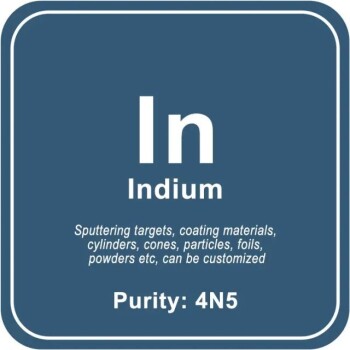
High Purity Indium (In) Sputtering Target / Powder / Wire / Block / Granule
Looking for high-quality Indium materials for laboratory use? Look no further! Our expertise lies in producing tailored Indium materials of varying purities, shapes, and sizes. We offer a wide range of Indium products to suit your unique requirements. Order now at reasonable prices!
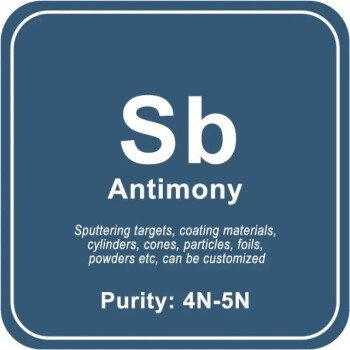
High Purity Antimony (Sb) Sputtering Target / Powder / Wire / Block / Granule
Get high-quality Antimony (Sb) materials tailored to your specific needs. We offer a wide range of shapes and sizes at reasonable prices. Browse our sputtering targets, powders, foils, and more.
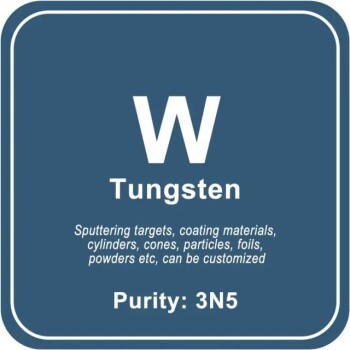
High Purity Tungsten (W) Sputtering Target / Powder / Wire / Block / Granule
Find high-quality Tungsten (W) materials for your laboratory needs at affordable prices. We offer customized purities, shapes, and sizes of sputtering targets, coating materials, powders, and more.
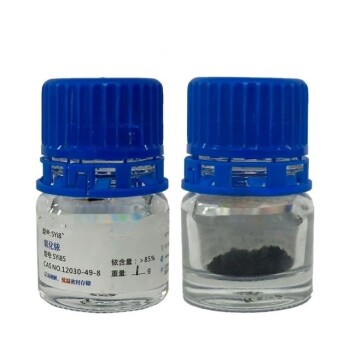
Iridium dioxide IrO2 for electrolysis of water
Iridium dioxide, whose crystal lattice is rutile structure. Iridium dioxide and other rare metal oxides can be used in anode electrodes for industrial electrolysis and microelectrodes for electrophysiological research.
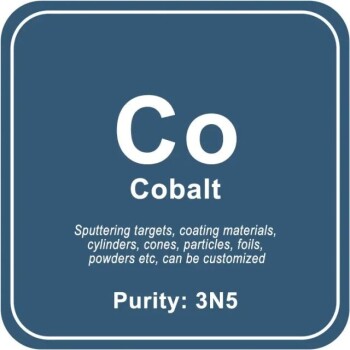
High Purity Cobalt (Co) Sputtering Target / Powder / Wire / Block / Granule
Get affordable Cobalt (Co) materials for laboratory use, tailored to your unique needs. Our range includes sputtering targets, powders, foils, and more. Contact us today for customized solutions!
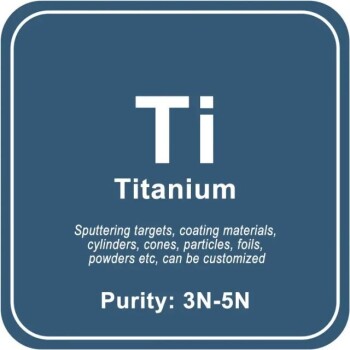
High Purity Titanium (Ti) Sputtering Target / Powder / Wire / Block / Granule
Shop for high-quality Titanium (Ti) materials at reasonable prices for laboratory use. Find a wide range of tailored products to suit your unique needs, including sputtering targets, coatings, powders, and more.
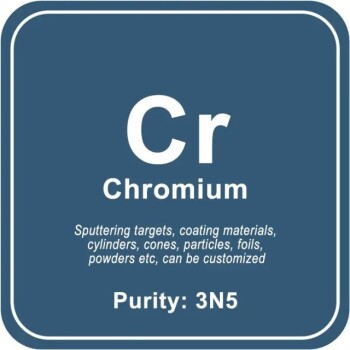
High Purity Chromium (Cr) Sputtering Target / Powder / Wire / Block / Granule
Get affordable Chromium materials for your laboratory needs. We produce custom shapes and sizes, including sputtering targets, foils, powders, and more. Contact us today.

Alumina (Al2O3) Ceramic Rod-Insulated
Insulated alumina rod is a fine ceramic material. Alumina rods have excellent electrical insulating properties, high chemical resistance and low thermal expansion.
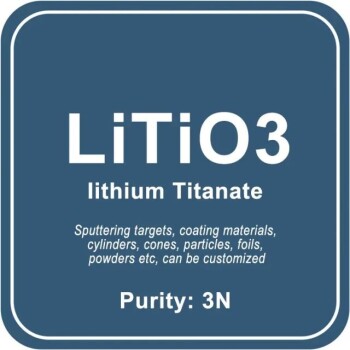
Iithium titanate (LiTiO3) Sputtering Target / Powder / Wire / Block / Granule
Get high-quality Iithium Titanate (LiTiO3) materials for your laboratory at reasonable prices. Our tailored solutions cater to different purities, shapes, and sizes, including sputtering targets, coating materials, powders, and more. Order now!

High Purity Metal Sheets - Gold / Platinum / copper / iron etc...
Elevate your experiments with our high-purity sheet metal. Gold, platinum, copper, iron, and more. Perfect for electrochemistry and other fields.

High Purity Aluminum (Al) Sputtering Target / Powder / Wire / Block / Granule
Get high-quality Aluminum (Al) materials for laboratory use at affordable prices. We offer customized solutions including sputtering targets, powders, foils, ingots & more to meet your unique needs. Order now!

High Purity Chromium Oxide (Cr2O3) Sputtering Target / Powder / Wire / Block / Granule
Looking for high-quality Chromium Oxide materials for your lab? Our range includes sputtering targets, powders, foils, and more, customized to your needs. Shop now for reasonable prices.
Related Articles

How FTIR Pellet Press Works in Sample Preparation for Spectroscopy Analysis
FTIR (Fourier Transform Infrared) spectroscopy is a powerful analytical technique for identifying and characterizing chemical compounds based on their infrared absorption spectra.

What is xrf analysis and how to making pressed xrf pellets
What is xrf analysis and how to making pressed xrf pellets, there are also some precautions in the xrf sample preparation process

Cold Isostatic Pressing: An Overview and its Industrial Applications
Cold isostatic pressing (CIP) is a method of processing materials by using liquid pressure to compact powder. It is similar to metal mold processing and is based on Pascal's law.

How To Turn XRF analysis sample preparation Into Success
In X-ray fluorescence (XRF) analysis, sample preparation is an important step because it can significantly impact both the quality and the efficiency of the analysis.

How Isostatic Presses Help Eliminate Defects in Materials
Isostatic pressing is a manufacturing process that is used to eliminate defects in materials.

Understanding the Isostatic Pressing Process: From Inception to Applications
The isostatic pressing process was pioneered in the mid-1950s and has steadily grown from a research curiosity to a viable production tool.Many industries apply this technique for the consolidation of powders or defect healing of castings. The process is used for a range of materials, including ceramics, metals, composites, plastics, and carbon.It has found wide application in industries for the consolidation of powders or defect healing of castings. It offers unique benefits for ceramic and refractory applications, allowing for the formation of product shapes to precise tolerances and reducing the need for costly machining.

The Role of Powder Characteristics in Cold Isostatic Pressing
Cold Isostatic Pressing (CIP) is a powder compaction technique that involves applying uniform pressure to a powder-filled container from all directions.

Comprehensive Classification and Application of Magnetron Sputtering Targets
This article details the classification, applications, and principles of magnetron sputtering targets across various industries.

PVD Sputtering Targets and Hot Isostatic Pressing: Part 1
Explores the use of hot isostatic pressing in producing high-quality sputtering targets and the applications of PVD sputtering technology.
